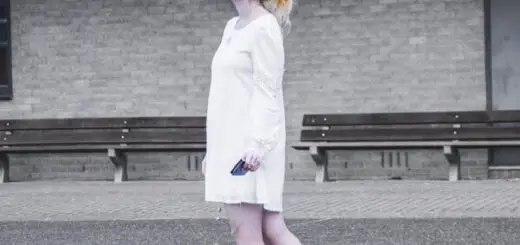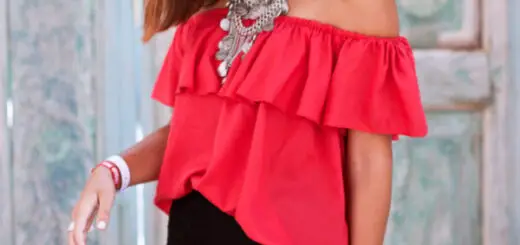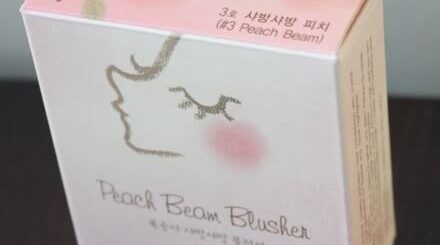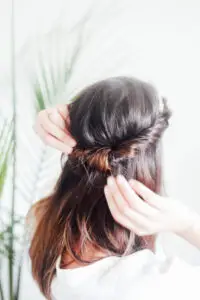5 Ways to Avoid Colored Jean Trend and Faux Pas – Glam Radar
After a lifetime of regular blue denim washes, the thought of colored jeans can be daunting. If you’re looking for a way to incorporate more color into your wardrobe, colored jeans are great to do it. They’re versatile, can be mixed and matched into different looks, and dressed up or down. And now, you can spice up your denim collection with a pair of colored jeans as you can buy them in almost any color, the possibilities are nearly endless. So, keep on reading for the 5 ways to avoid colored jeans trend faux pas.
- Wear colored jeans that flatter your body.
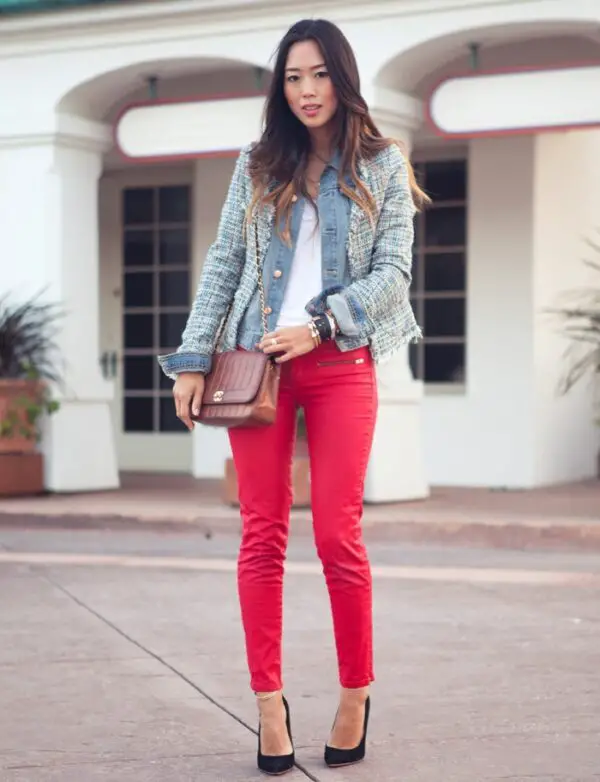
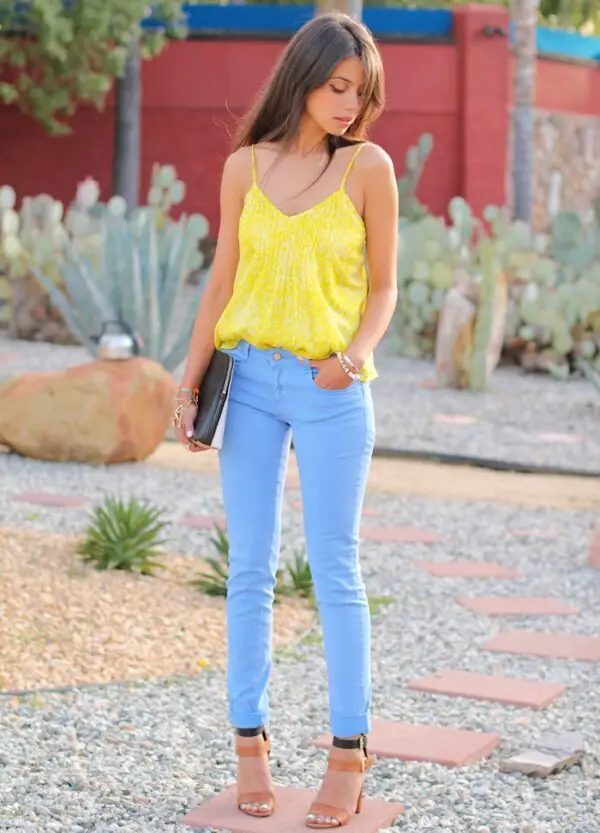
Not all colored jeans are skinny jeans as you can find them in a variety of cuts and styles. If you wish for a sexy and modern look, resort to skinny jeans. Like fashion blogger Annabelle Fleur, you can simply wear it with a brightly colored top and ankle strap sandals to add some feminine vibe to your street looks. If you’re petite, avoid Capri or cropped style of jeans, as well as baggy boyfriend style that will only overwhelm your frame.
- Wear a neutral color on top or low-key print, especially if the color of the jeans is particularly bright.



Neutral colored tops are great for balancing your bold color, though you can still wear a printed top. However, make it low-key so it blends in with the jeans and doesn’t fight against them. Don’t wear outrageous prints with brightly colored jeans as both looks will compete for attention. Like fashion blogger Annabelle Fleur, you could wear a printed top with your black blazer to look more balanced than wearing it alone.
- Try pastel colored jeans to add a sweet softness to your look.

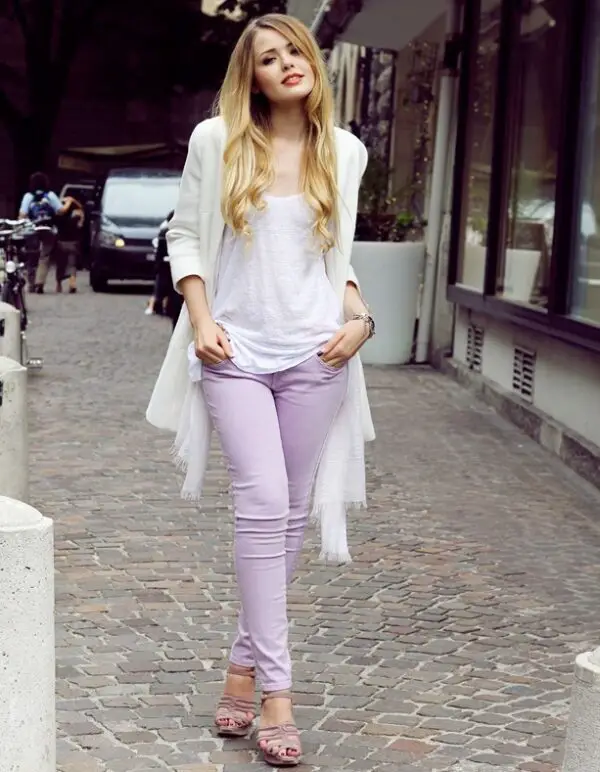
Some popular colors for jeans are coral, different shades of blues, mustard, orange, purple, yellow, and green. Sometimes, all you’ll need to pair with your new jeans is a plain white tee. Go ahead and wear colored jeans in the winter and fall, but look for more muted colors instead of the bright and flashy colors you’d wear in the spring or summer. However, don’t attempt to wear pastels if a light color wash doesn’t flatter your body type, especially if you’re bottom-heavy.
- Color block with a complimentary bright top, if you are feeling trendy.
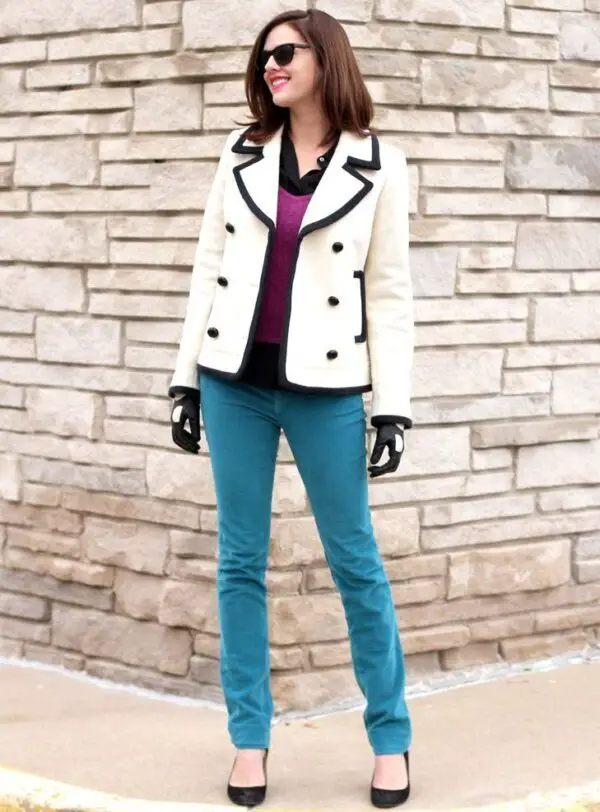
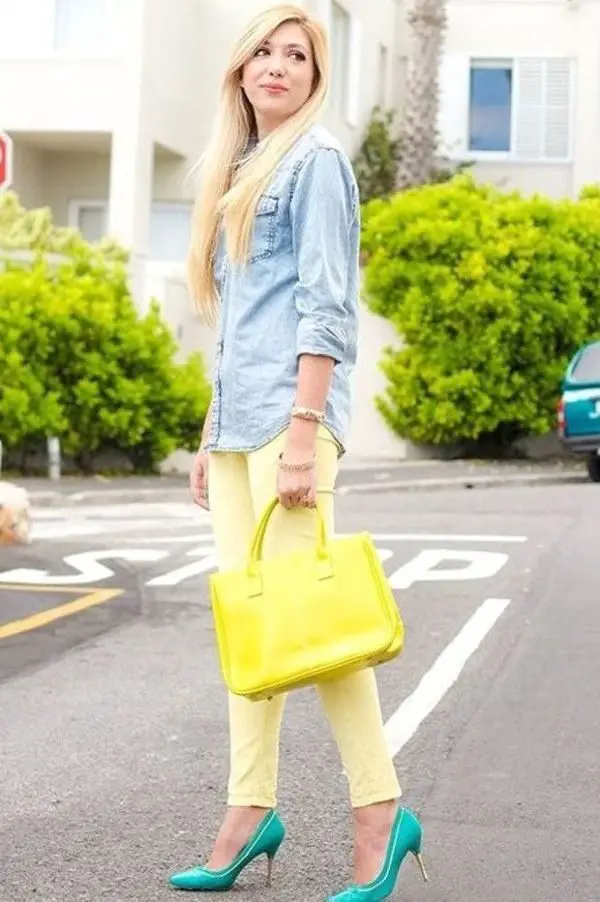

Color blocking is trendy right now, and taking advantage on your colored jeans can be great to look effortless yet trendy. Don’t dress in one color from head to toe. If you must, at least make the top and bottom different shades or tones so you don’t look like one big blob of color. Think of your top, shoes, and bag that can add some fun to your looks.
- Don’t wear flashy accessories with your colored jeans.
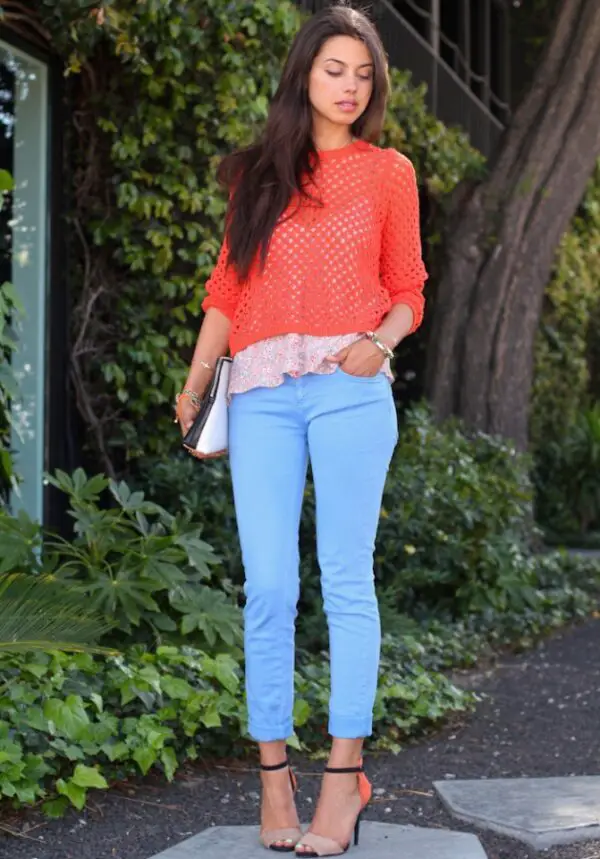
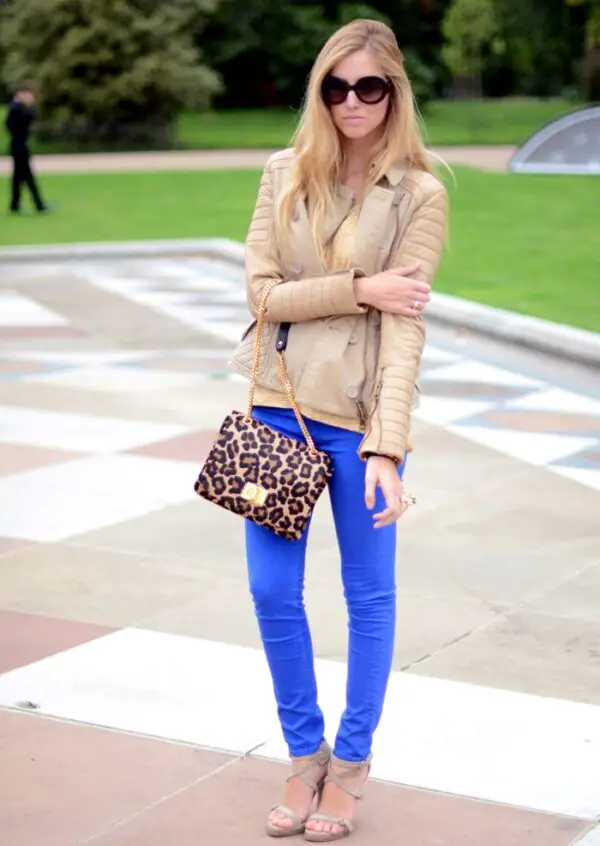
Wear black, brown, or nude-colored shoes with your colored jeans. You can go with flats, boots, or heels depending on how much you want to dress up your outfit. Just look for more neutral extras, and let your colored jeans make your fashion statement for you. By heeding these tricks, you’ll look trendy and fashion-forward in an effortless way.
